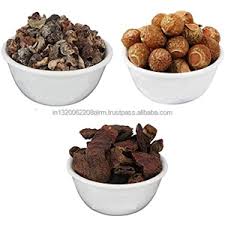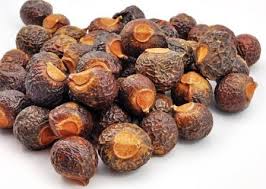Amla and Its Role in Balancing Blood Sugar Levels
Maintaining stable blood sugar levels is one of the most critical components of good health, especially in today’s fast-paced lifestyle where diabetes and insulin resistance are increasingly common. While modern medicine offers various solutions to manage blood sugar, more and more people are turning towards natural and Ayurvedic remedies to support long-term wellness.
Amla, also known as Indian Gooseberry, is one of Ayurveda’s most powerful and revered herbs. At Dirghaanshi, we focus on the healing power of Jadi Buti and traditional herbal wisdom — and Amla stands at the forefront for its incredible benefits in blood sugar regulation, antioxidant support, and metabolic balance.
In this in-depth guide, we explore how Amla plays a vital role in naturally balancing blood sugar levels and how you can integrate it into your daily wellness routine for holistic diabetes management.
Long Description: How Amla Helps in Balancing Blood Sugar Levels Naturally
✅ 1. Amla Contains Chromium That Regulates Carbohydrate Metabolism
One of the unique components of Amla is its high chromium content, a mineral known to aid the body in proper carbohydrate metabolism. Chromium enhances the effectiveness of insulin, which is essential in transporting glucose from the bloodstream into the cells.
Key Benefits:
Improves insulin sensitivity
Aids in better glucose absorption
Reduces sugar spikes after meals
Conclusion: Chromium in Amla supports the body’s ability to manage blood sugar naturally and efficiently.
✅ 2. Rich in Antioxidants that Protect Pancreatic Cells
Amla is abundant in antioxidants like Vitamin C, polyphenols, and flavonoids, which protect the pancreas — the organ responsible for producing insulin. Oxidative stress is one of the underlying causes of beta-cell dysfunction in diabetics.
Key Benefits:
Prevents oxidative damage to insulin-producing cells
Supports regeneration of beta-cells
Enhances overall pancreatic function
Conclusion: Antioxidants in Amla protect and rejuvenate the pancreas, which is crucial in managing diabetes.
✅ 3. Lowers Fasting and Postprandial Blood Glucose
Multiple studies have confirmed that regular consumption of Amla helps lower both fasting blood sugar and post-meal blood glucose levels. The polyphenols in Amla slow down carbohydrate absorption in the intestines, reducing glucose spikes.
Key Benefits:
Reduces sugar absorption rate
Controls post-meal sugar levels
Maintains stable energy throughout the day
Conclusion: Amla is a natural glucose stabilizer when consumed regularly.
✅ 4. Improves Insulin Resistance
Insulin resistance occurs when the body’s cells become less responsive to insulin, leading to elevated blood glucose. Amla helps reduce insulin resistance by improving insulin receptor sensitivity, which allows glucose to be absorbed effectively.
Key Benefits:
Enhances cellular response to insulin
Reduces risk of metabolic syndrome
Supports long-term blood sugar control
Conclusion: Amla contributes to reversing insulin resistance naturally.
✅ 5. Amla Is Low on the Glycemic Index
Amla has a low glycemic index (GI), which means it causes a slow and steady rise in blood sugar. This makes it ideal for people who are diabetic or pre-diabetic.
Key Benefits:
Does not spike blood sugar
Suitable for diabetic-friendly meals
Keeps energy levels balanced
Conclusion: Amla is a safe and effective fruit for glycemic control.
✅ 6. Supports Weight Management
Being overweight is a major risk factor for Type 2 Diabetes. Amla aids in improving metabolism and digestion, promoting weight loss which directly helps in managing blood sugar levels.
Key Benefits:
Boosts metabolic rate
Helps burn fat
Controls appetite
Conclusion: Amla supports weight control, indirectly aiding in diabetes prevention.
✅ 7. Reduces Inflammation Linked to Diabetes
Chronic inflammation is often seen in individuals with high blood sugar. Amla contains natural anti-inflammatory compounds that help reduce internal inflammation, especially in blood vessels and organs.
Key Benefits:
Protects blood vessels from damage
Reduces risk of cardiovascular complications
Improves circulation
Conclusion: Amla lowers inflammation, supporting overall health in diabetic patients.
✅ 8. Regulates Cholesterol and Blood Pressure
People with high blood sugar often experience issues with blood pressure and cholesterol. Amla helps manage all three by lowering LDL (bad) cholesterol, increasing HDL (good) cholesterol, and stabilizing blood pressure.
Key Benefits:
Improves lipid profile
Supports cardiovascular health
Reduces the risk of heart disease
Conclusion: Amla is a multi-benefit herb that supports heart and metabolic health together.
✅ 9. Cleanses the Liver and Detoxifies the Body
The liver plays a crucial role in metabolizing sugars and toxins. Amla acts as a natural liver detoxifier, promoting better sugar metabolism and reducing fat accumulation in the liver.
Key Benefits:
Improves liver enzyme activity
Detoxifies harmful substances
Supports hormonal balance
Conclusion: A healthy liver means better blood sugar management.
✅ 10. Balances Hormonal Imbalances
Conditions like PCOS (Polycystic Ovary Syndrome) and thyroid imbalance can contribute to insulin resistance and blood sugar spikes. Amla supports hormonal balance and reduces insulin resistance associated with these conditions.
Key Benefits:
Balances estrogen and insulin levels
Supports thyroid health
Reduces sugar cravings caused by hormonal fluctuation
Conclusion: Amla benefits both metabolic and hormonal health.
How to Use Amla for Blood Sugar Management
- Amla Juice
Take 20 ml fresh Amla juice on an empty stomach in the morning.
Helps reduce fasting sugar levels and improves digestion.
- Amla Powder
Mix 1 teaspoon of Amla powder with lukewarm water.
Consume 30 minutes before meals to control post-meal sugar.
- Amla Capsules or Tablets
Take 1 capsule twice daily after meals.
Easy and effective for daily use.
- Amla in Smoothies or Herbal Teas
Blend Amla with cinnamon or tulsi for a sugar-regulating herbal drink. - Amla Pickle or Murabba (in moderation)
Provides taste with health, but monitor sugar content if buying commercially.
Precautions
Amla is generally safe, but consult your doctor if you’re on insulin or other sugar-lowering medications to avoid hypoglycemia.
Avoid sour fruits in large quantities if you have acid reflux.
Choose organic, preservative-free Amla for best results.
Research Studies Supporting Amla for Blood Sugar Control
A 2011 study published in the International Journal of Food Sciences and Nutrition showed that Amla significantly reduced blood glucose and improved lipid profile in Type 2 diabetic patients.
Another 2015 research from Ayu Journal highlighted that Amla extract improved fasting glucose, insulin levels, and inflammation markers.
Conclusion
Amla is much more than just an immunity booster or skin-friendly fruit. It is a powerful Ayurvedic solution for maintaining healthy blood sugar levels, improving insulin function, and preventing diabetes-related complications. Whether you are diabetic, pre-diabetic, or simply aiming for better metabolic health, Amla should be a regular part of your daily lifestyle.
At Dirghaanshi, we promote the age-old power of Jadi Buti and natural healing. Amla, being one of Ayurveda’s most versatile herbs, offers a complete wellness approach — balancing your sugar levels while supporting the heart, liver, digestion, and more.












